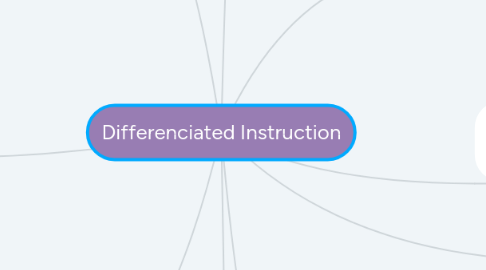Differenciated Instruction
создатель Yuliana Yamá


1. It begins with knowing how students learn best. In other words, their type of learning style.
1.1. Also, when and how to use multiple intructions strategies. In that way, students will be able to learn in multiple ways.
2. The use of flexible groupings:
2.1. Students are grouped and regrouped over the entire course or scholar year.
2.2. This allows targeted small group instruction.
2.3. It is important that the members of a group are always changing so that students learn from each other and grow.
2.4. Flexible groups can include:
2.4.1. Whole class instruction.
2.4.2. Small group instruction.
2.4.3. One-to-one instruction.
2.4.4. Peer teaching pears.
2.4.5. Partner learning.
2.4.6. Independent learning study.
2.4.7. Cooperatives small group learning.
3. Differenciated intruction allows all students to have the best learning experience.
4. Yuliana Yamá, 20th November
5. The belief that students learn at different rates and in different ways.
5.1. It informs:
5.1.1. How space is organized at the classroom.
5.1.2. How instruction is planned and delivered.
5.1.3. The learning resources that are used.
5.1.4. How student learning is assessed.
6. Differences between students are valued since those allow them to:
6.1. Have a variety of opportunities.
6.2. Explore different concepts.
6.3. Make sense of ideas.
7. It can take many forms:
7.1. Providing materials.
7.2. Learning and trying tasks at different levels of challenge.
7.3. Supporting the students at different levels depending on their needs.
7.3.1. Differenciated instruction assessement allows:
7.3.1.1. Informing instructional planning.
7.3.1.2. To take note of what students know, understand and can do.
